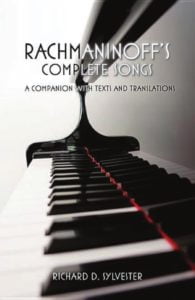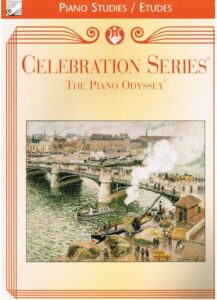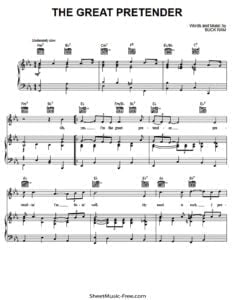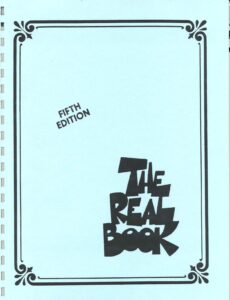Rachmaninoff D minor Sonata Op 28 II Lento Zoltán Kocsis, analysis with sheet music

Piano Sonata No. 1 in D minor, Op. 28, is a piano sonata by Sergei Rachmaninoff, completed in 1908. It is the first of three “Dresden pieces”, along with Symphony No. 2 and part of an opera, which were composed in the quiet city of Dresden, Germany.
It was originally inspired by Goethe‘s tragic play Faust; although Rachmaninoff abandoned the idea soon after beginning composition, traces of this influence can still be found. After numerous revisions and substantial cuts made at the advice of his colleagues, he completed it on April 11, 1908. Konstantin Igumnov gave the premiere in Moscow on October 17, 1908. It received a lukewarm response there, and remains one of the least performed of Rachmaninoff’s works.
It has three movements, and takes about 35 minutes to perform. The sonata is structured like a typical Classical sonata, with fast movements surrounding a slower, more tender second movement. The movements feature sprawling themes and ambitious climaxes within their own structure, all the while building towards a prodigious culmination. Although this first sonata is a substantial and comprehensive work, its successor, Piano Sonata No. 2 (Op. 36), written five years later, became the better regarded of the two. Nonetheless, it, too, was given serious cuts and opinions are mixed about those.
Background
In November 1906, Rachmaninoff, with his wife and daughter, moved to Dresden primarily to compose a second symphony to diffuse the critical failure of his first symphony, but also to escape the distractions of Moscow. There they lived a quiet life, as he wrote in a letter, “We live here like hermits: we see nobody, we know nobody, and we go nowhere. I work a great deal,” but even without distraction he had considerable difficulty in composing his first piano sonata, especially concerning its form.
The original idea for it was to be a program sonata based on the main characters of the tragic play Faust by Johann Wolfgang von Goethe: Faust, Gretchen, and Mephistopheles, and indeed it nearly parallels Franz Liszt‘s own Faust Symphony which is made of three movements which reflect those characters. However, the idea was abandoned shortly after composition began, although the theme is still clear in the final version.
Rachmaninoff enlisted the help of Nikita Morozov, one of his classmates from Anton Arensky‘s class back in the Moscow Conservatory, to discuss how the sonata rondo form applied to his sprawling work. At this time he was invited, along with Alexander Glazunov, Nikolai Rimsky-Korsakov, Alexander Scriabin, and Feodor Chaliapin, to a concert in Paris the following spring held by Sergei Diaghilev to soothe France–Russia relations, although Diaghilev hated his music. Begrudgingly, Rachmaninoff decided to attend only for the money, since he would have preferred to spend time on this and his Symphony No. 2 (his opera project, Monna Vanna, had been dropped). Writing to Morozov before he left in May 1907, he expressed his doubt in the musicality of the sonata and deprecated its length, even though at this time he had completed only the second movement.
On returning to his Ivanovka estate from the Paris concert, he stopped in Moscow to perform an early version of the sonata to contemporaries Nikolai Medtner, Georgy Catoire, Konstantin Igumnov, and Lev Conus. With their input, he shortened the original 45-minute-long piece to around 35 minutes. He completed the work on April 11, 1908. Igumnov gave the premiere of the sonata on October 17, 1908, in Moscow, and he gave the first performance of the work in Berlin and Leipzig as well, although Rachmaninoff missed all three of these performances.
Composition

Movement 1.
The piece is structured as a typical sonata in the Classical period: the first movement is a long Allegro moderato (moderately quick), the second a Lento (very slow), and the third an Allegro molto (very fast).
- Allegro moderato (in D minor, ends in D major) The substantial first movement Allegro moderato presents most of the thematic material and motifs revisited in the later movements. Juxtaposed in the intro is a motif revisited throughout the movement: a quiet, questioning fifth answered by a defiant authentic cadence, followed by a solemn chord progression. This densely thematic expression is taken to represent the turmoil of Faust’s mind. The movement closes quietly in D major.
- Lento (in F major) In key, the movement pretends to start in D major before settling in the home key of F major. Although the shortest in length and performance time, the second movement Lento provides technical difficulty in following long melodic lines, navigating multiple overlapping voices, and coherently performing the detailed climax, which includes a small cadenza.
- Allegro molto (in D minor) Ending the sonata is the furious third movement Allegro molto. Lacking significant thematic content, the movement serves rather to exploit the piano’s character, not without expense of sonority. The very first measures of the first movement are revisited, and then dissolves into the enormous climax, a tour de force replete with full-bodied chords typical of Rachmaninoff, which decisively ends the piece in D minor.
Reception
Rachmaninoff played early versions of the piece to Oskar von Riesemann (who later became his biographer), who did not like it. Konstantin Igumnov expressed interest upon first hearing it in Moscow, and following his suggestion Rachmaninoff cut about 110 bars.
The sonata had a mediocre evaluation after Igumnov’s premiere in Moscow. Nikolai Rimsky-Korsakov had died several months previously, and the burden of heading Russian classical music had fallen on this all-Rachmaninoff programme of October 17, 1908. Although the concert, which also included Rachmaninoff’s Variations on a Theme of Chopin (Op. 22, 1903), was “filled to overflowing”, one critic called the sonata dry and repetitive, however redeeming the interesting details and innovative structures were.
Lee-Ann Nelson, via her 2006 dissertation, noted that Rachmaninoff’s revisions are always cuts, with the material simply excised and discarded. The hypothesis is that the frequency of negative responses to many of his pieces, not just the response to the first symphony, led to a deep insecurity, particularly with regard to length. The musicologists Efstratiou and Martyn argued against, for instance, the cuts made to the second sonata on a formal basis. Unlike other pieces, such as the second piano sonata and the fourth piano concerto, no uncut version of this piece is currently known to be extant.
Today the sonata remains less well-known than Rachmaninoff’s second sonata, and is not as frequently performed or recorded. Champions of the work tend to be pianists renowned for their large repertoire. It has been recorded by Eteri Andjaparidze, Vladimir Ashkenazy, Boris Berezovsky, Idil Biret, Sergio Fiorentino, Leslie Howard, Ruth Laredo, Valentina Lisitsa, Nikolai Lugansky, Olli Mustonen, John Ogdon, Michael Ponti, Santiago Rodriguez, Alexander Romanovsky, Howard Shelley, Daniil Trifonov, Xiayin Wang, and Alexis Weissenberg. Lugansky performs the piece regularly.
Browse in the Library:
| Artist or Composer / Score name | Cover | List of Contents |
|---|---|---|
| The Phantom of the Opera – Andrew Lloyd Webber (Piano, Vocal, Guitar) |
 |
 |
| The Physical Basis Of Piano Touch And Tone (By Ortmann Otto) (1925) |
 |
|
| The pianist Anthology (28 favorite pieces collection) (1920) |
 |
|
| The Piano A History In 100 Pieces by Susan Tomes (Book) |
 |
|
| The Piano Guys |
 |
The Piano Guys |
| The Piano Guys – O Come O Come Emmanuel |
 |
|
| The Piano Guys Christmas Together Piano Solo With Optional Cello |
 |
The Piano Guys Christmas Together Piano Solo With Optional Cello Contents |
| The Piano Guys Jon Schmidt I Do |
 |
|
| The Piano Guys Jon Schmidt Piano Solos I | The Piano Guys Jon Schmidt Piano Solos I |
 |
| The Piano Guys Jon Schmidt Piano Solos II | The Piano Guys Jon Schmidt Piano Solos II | |
| The Piano Guys Jon Schmidt Piano Solos III | The Piano Guys Jon Schmidt Piano Solos III |
 |
| The Piano Guys Let It Go Disneys Frozen Vivaldis Winter | The Piano Guys Let It Go Disneys Frozen Vivaldis Winter | |
| The Piano Guys Michael Meets Mozart | The Piano Guys Michael Meets Mozart | |
| The Piano Guys Perfect (piano solo) |
 |
|
| The Piano Odyssey Etudes 1 Celebration Series RCM |
 |
|
| The Piano Odyssey Etudes 2 (Celebration Series RCM) |
 |
|
| The Piano Odyssey Etudes 3 Celebration Series RCM |
 |
|
| The Piano Odyssey Etudes 4 (Celebration Series) RCM |
 |
|
| The Piano Odyssey Repertoire 1 (Celebration Series) RCM |
 |
|
| The Piano Odyssey Repertoire 10 (Celebration Series) RCM |
 |
|
| The Piano Odyssey Repertoire 2 (Celebration Series) RCM |
 |
|
| The Piano Odyssey Repertoire 3 (Celebration Series) RCM |
 |
|
| The Piano Odyssey Repertoire 4 (Celebration Series) RCM |
 |
|
| The Piano Odyssey Repertoire 6 (Celebration Series) RCM |
 |
The Piano Odyssey Repertoire 6 |
| The Piano Odyssey Repertoire 7 (Celebration Series) RCM |
 |
|
| The Piano Odyssey Repertoire 8 (Celebration Series) RCM |
 |
|
| The Pianoforte And Its Music (By Henry Edward Krehbiel) (1911) |
 |
|
| The Pink Floyd Song Book (Guitar) |
 |
The Pink Floyd Song Book (Guitar)_compressed |
| The Pink Panther Full Theme (Musescore File).mscz | ||
| The Place I’ll Return To Someday – Final Fantasy Ix (Musescore File).mscz | ||
| The Platters – The Great Pretender |
 |
|
| The Platters Anthology |
 |
The Platters Anthology |
| The Polar Express – Believe – Glen Ballard | The Polar Express – Believe sheet music | |
| The Polar Express – Selections from |
 |
The Polar Express – Selections from |
| The Polar Express – When Christmas Comes to Town – Glen Ballard | ||
| The Police – Every Breath You Take – Arr. For Guitar (Musescore File).mscz | ||
| The Police – Guitar Signature Licks with audio MP3 with TABs |
 |
The Police – Guitar Signature Licks |
| The Police – Play Guitar With The Police (Book + audio MP3) with Tablature |
 |
Play Guitar With – The Police |
| The Police – The Best (songbook) Guitar with TABs |
 |
The Police – The Best (songbook) |
| The Police – The Great Songs of The Police |
 |
Police – The Great Songs of The Police |
| The Police – Walking on the Moon The Untold Story by Chris Campion (Book) |
 |
|
| The Practical Jazz Guitarist – by Mark White (Berklee Press) |
 |
The Practical Jazz Guitarist – by Mark White |
| The Pretenders – I’ll Stand By You (Piano, vocal, guitar) |
 |
|
| The Princess And The Frog – Randy Newman Easy Piano arr. |
 |
The Princess And The Frog – Newman R. Easy Piano |
| The Principles Of Expression In Pianoforte Playing (By Adolph Friedrich Christiani) (1885) |
 |
|
| The Producers – Betrayed!, From the Musical by Mel Brooks |
 |
|
| The Producers Music Theory Handbook May 2023 |
 |
|
| The Punisher – Money For Everyone – Carlo Siliotto | ||
| The Queen – Alexandre Desplat |
 |
|
| The Quotable Musician From Bach To Tupac (eBook) |
 |
|
| The Ragtime songbook songs of – Charters, Ann, ed. 1965 |
 |
The Ragtime songbook songs of – Charters, Ann, ed (1965) |
| The Readers Digest Childrens Songbook |
 |
The Readers Digest Childrens Songbook |
| The Real Boogie Woogie Memphis Slim Piano Solos (1959) Book |
 |
|
| The Real Book 6th Ed |
 |
The Real Book 6th Ed |
| The Real Book Jazz Standards In C Version – A Collection of some of the greatest songs of the 20th Century |
 |
The Real Book Jazz Standards In C Version |
| The Real Book of Blues – 225 great blues Melody Line, chords, lyrics |
 |
The Real Book of Blues |
| The Real Book Of Funk Jazz |
 |
real book of funk |
| The Real Book Of Jazz Volume I 5th Edition sheet music pdf |
 |
real book of jazz |
| The Real Book of Jazz Volume II (All new) |
 |
The Real Book of Jazz Volume II |
| The Real Book of Jazz Volume III (all new) |
 |
The Real Book of Jazz Volume III |
| The Real Book of Jazz Volume IV for C Instruments |
 |
The Real Book of Jazz Volume IV for C Instruments |
| The Real Book of Jazz Volume V |
 |
The Real Book of Jazz Volume V |
| The Real Christmas Book Fake |
 |
The Real Christmas Book Fake |
| The Real JAZZ Vol. 5 |
 |
|
| The Real Little Classical Fake Book (over 600 Classical Themes and Melodies |
 |
Real classical fake book sheet music |
| The Real Rock Book 2 |
 |
Real Rock Guitar by Kenn ChipkinThe Real Rock Book 2 |
| The Real Songbook – Bossa Nova 1 Brazilian Jazz Real Book (Sheet Music) | The Real Songbook – Bossa Nova 1 Brazilian Jazz Real Book | |
| The Red Book Great Piano Solos |
 |
The Red Book Great Piano Solos |
| The Reggae Songbook – Music Sales Corporation |
 |
The Reggae Songbook – Music Sales Corporation |
| The Ring – End Credits Hans Zimmer |
 |
|
| The Rock Story Edited By Theo Cateforis (Book) |
 |
|
| The Rocky Horror Picture Show Science Fiction Double | The Rocky Horror Picture Show – Science Fiction Double | |
| The Rolling Stones Let It Bleed Authentic Guitar TABs |
 |
The Rolling Stones Let It Bleed Authentic Guitar TABs |
| The Rolling Stones – Best Of (Guitar Bass Drums Songbook) |
 |
The Rolling Stones – Best Of (Guitar Bass Drums Songbook) |
| The Rolling Stones – Get Off Of My Cloud | ||
| The Rolling Stones Classics – Volume One – Off The Record (Guitar Bass Drum Songbook) |
 |
The Rolling Stones Classics – Volume One- Off The Record (Guitar Bass Drum Songbook) |
| The Rolling Stones Guitar Play-Along Volume 66 – with audio MP3 embedded with TAB |
 |
The Rolling Stones Guitar Play |
| The Rolling Stones Rock Score |
 |
|
| The Rolling Stones Songbook (Sheet Music Guitar Tab) |
 |
|
| The Russian School of Piano playing 1 |
 |
|
| The Russian School Of Piano Playing 2 |
 |
|
| The Sapin (Musescore File).mscz | ||
| The School Of Velocity Op 299 No. 1 (Musescore File).mscz | ||
| The Scientist – Coldplay Piano Arrangement(1) (Musescore File).mscz | ||
| The Secret History of Rock. The Most Influential Bands You’ve Never Heard |
 |
|
| The secret Life of Glenn Gould, A Genius in Love, by Michael Clarkson (2010) Biography |
 |
|
| The Shadow Of Your Smile (Musescore File).mscz | ||
| The Shadow of your Smile Johnny Mandel Francis Webster Jazz Standard arr. Carsten Gerlitz |
 |
|
| The Shadow of your Smile(lead sheet) Mandel & Webster |
 |
|
| The Shadows – 20 Big Hits – Songbook |
 |
The Shadows songbook |
| The Shadows Easy Guitar Hits |
 |
The Shadows Easy Guitar Hits |
| The Shape of Water (Alexandre Desplat) | ||
| The Shawshank Redemption – Stoic Theme – Thomas Newman | ||
| The Simpson’s Theme (Piano) Sheet Music |
 |
|
| The Simpsons – Main Title | ||
| The Simpsons Baby On Board | The-Simpsons-Baby-On-Board | |
| The Simpsons Minimum Wage Nanny | The Simpsons Minimum Wage Nanny | |
| The Simpsons Songbook – Danny Elfman |
 |
The Simpsons songbook |
| The Simpsons Theme (Musescore File).mscz | ||
| The Simpsons Theme by Danny Elfman |
 |
|
| The Sims Build Theme No. 1 |
 |
 |
| The Slick Book |
 |
|
| The Smiths – Anthology |
 |
The Smiths – Anthology |
| The Smiths Best Of |
 |
The Smiths Best Of |
| The Song Is You – Jazz Standard | The Song Is You – Jazz Standard | |
| The Song Of Purple Summer (Musescore File).mscz | ||
| The Song Of Purple Summer Dunkan Sheik And Steven Sater (Musicals) |
 |
|
| The Song Writing Genius Within You by Geoffrey Williams (Book)2008 |
 |
|
| The Sound Of Music – Climb Every Mountain – Julie Andrews | ||
| The Sound Of Music – Rodgers & Hammerstein (Sheet Music Book) Vocal selections |
 |
The Sound of Music |
| The Sound Of Silence – Simon & Garfunkel (Musescore File).mscz | ||
| The Spirit Of God Like a Fire is Burning Mixed Chrus and Organ or Pino by Mark Wilberg Ssaattbb |
 |
|
| The Story Of Music From Babylon To The Beatles How Music Has Shaped Civilization (Book) |
 |
|
| The Streets Of Laredo – American Cowboy Song Johnny Cash (Musescore File).mscz | ||
| The Strokes – Is This It (guitar with TABs) |
 |
The Strokes |
| The Third Man Theme By Anton Karas Guitar TABs |
 |
|
| The Three Tenors Songbook (for high voice and piano) |
 |
The Three Tenors Songbook |
| The Time Machine – The Eloi – Klaus Badelt | The Time Machine The Eloi Klaus Badelt 1st page | |
| The Tokens – The Lion Sleeps Tonight (Piano Solo arr. sheet music, Noten, partitura, partition) |
 |
|
| The Tokens – The_Lion_Sleeps_Tonight Piano Solo arr.mscz |
